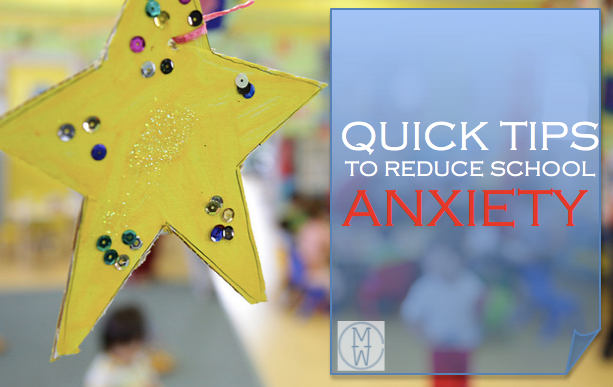With school back in session, emotions are flying high. Excitement mixed with a bit of nervousness is expected. Whether it is your child’s first school experience or just another year, it’s the start of a new chapter in his/her life and yours.
As we know all children are different and come to school with their own set of tools and temperaments. Some are so excited they are able to jump right in and hardly look back at you, while others are slower to warm up. It is common for this honeymoon stage of excitement to last a couple of weeks to a good month. But don’t be alarmed if suddenly separation anxiety sets in. It is quite normal, come October, for it to show its face. It’s as if they suddenly realize the routine is solidifying and the newness is slipping away to normalcy.
Anxiety Hits
It has been my experience, for the last 20 years working in the early childhood field, that this anxiety bug hits many kiddos. Parents often wonder what has changed, why their child suddenly doesn’t want to go to school anymore, or they find themselves with code four clingers and much crying at drop off. It’s still important to check in with the teacher and stay connected as to what is going on but often it is just a part of the school routine that will become easier with time and reassurance.
Preschool Degrees of Anxiety
Some degree of separation anxiety is a sign that your preschooler has developed a healthy attachment to you. This doesn’t make it easier when they are crying out the window or the teacher has to hold them as you walk a way. There is nothing that pulls harder on your heartstrings than that feeling you get with those awful good-byes.
The beauty of these moments…yes I said beauty… is that they lend you and your child opportunities to grow closer, begin communication about healthy emotions, and gives them more tools for their life belt.
Quick Tips for Anxiety at School
The following tips often help with anxiety…
- Talk with their teacher find out how things are going at school
- Make sure they see you connecting and to reassure your trust in the teacher
(But be careful what you say: little ears are big and they are wiser than we think at times)
- Use CALM- Gain your own sense of calm and use these steps to respond …
C- Connect– look into your child’s eyes, leaning towards him/her, letting your child know you are trying to understand him/her.
A-Affect- match their affect using body language and facial expressions
L-Listen- listen to their words and paraphrase them back
M-Mirror- put it all together and mirror them
One of the most important gifts to give a child is the sense that you understand the feelings they are having.
- Help them become familiar with their emotions by helping them name them
“I can tell you are feeling worried because your face looks like this and you are clinging tightly to me. You will be okay. This is a great place. I love you and will miss you.”
- Create a special hand shake together to use when you say good-bye
- Make things short and sweet…don’t linger.
- Let children know what comes next by creating visual charts of the daily routine or storybooks of the day with your child.
- Teach them deep breathing by counting to five on an inhale and five on an exhale
These are simple tips for separation anxiety during transitions. If you find anxiety is showing up in more ways than this with your child… look to my next blog to see how to identify anxiety and what coping strategies work.
All in all your child will make it through and so will you!


